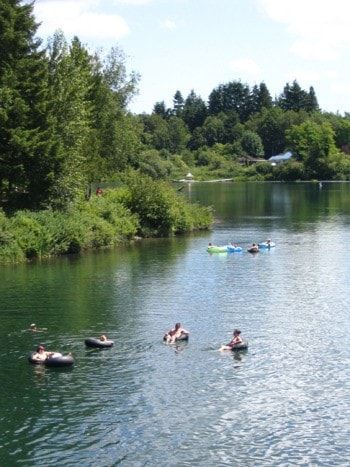Local place names like Bear Lake, Beaver Lake, the Big Pool (a section of the river that is located just below the bridge), the Upper Pool (below the weir) are self-explanatory. But reasons for other place names aren’t always so evident.
Take Marble Bay for instance. Located on Cowichan Lake (in recent years the location of the Bayview Village development), Marble Bay was given its name because of the large sections of white rocks that originally lined the shoreline.
Along the lake, near Caycuse, sits Heather Campsite that borrows its name from nearby Heather Mountain.
The mountain was aptly named due to the beautiful expanses of red and white heather that once covered the side of the mountain. One wonders if heather still grows there.
Along the road to Caycuse is a steep hill, infamous in bad weather, and long known as Grosskleg’s Hill. Decades ago, a local logging company called Grosskleg & Trueman, operated several camps around the lake, one of which situated close to shoreline near the steep hill.
We often hear reference to Shaw Creek, located past Youbou, as the area where the beautiful but endangered Roosevelt Elk has struggled to survive for decades. The creek name refers to Wingfield Shaw, thought to be a distant relative of early pioneer Frank Green, who either camped or briefly settled along the creek as early as the 1800s.
According to the writings of the late Trevor Green, Goat Island, which is one of ten islands located on Cowichan Lake, is positioned just south of Bald Mountain.
It was used to pasture goats, belonging to a Dr. Stoker who lived near the base of Bald Mountain.
Another of the ten islands that dot the lake was dubbed Dead Man’s Island, after the discovery, many decades ago, of two small Cedar bark ‘Indian’ coffins, by Harvey Carnell (father of Danny and Lori Carnell) and a friend.
The name Hill 60, which now refers to that dangerous stretch of Highway 18 (that seems to have a mind of its own when it comes to bad weather) originally referred to the mountain located high above today’s infamous stretch of Highway 18.
Local resident Lou Volkers, author of the article History of Hill 60, aptly explains; “In 1914 and 1915, during World War I, Canadian soldiers in Belgium distinguished themselves in the Battles of Ypres, part of Flanders Field, despite heavy casualties. One particular noteworthy engagement was the taking and holding of Hill 60. Cowichan residents were so proud of the bravery and achievement of the Canadians that they named the local mountain Hill 60…. In the summer of 1918…. manganese deposits [were discovered] on the 2,000-foot level on Hill 60... Three claims were staked on Hill 60, which became productive.”
CORRECTION:
A mistake was made in last week’s column, “Memories of growing up in Camp Six.” Rob delivered groceries for Gordie Carlson (Wally’s brother), not Wally. Wally no longer lives in Caycuse, as he has lived in Duncan for many years now.
